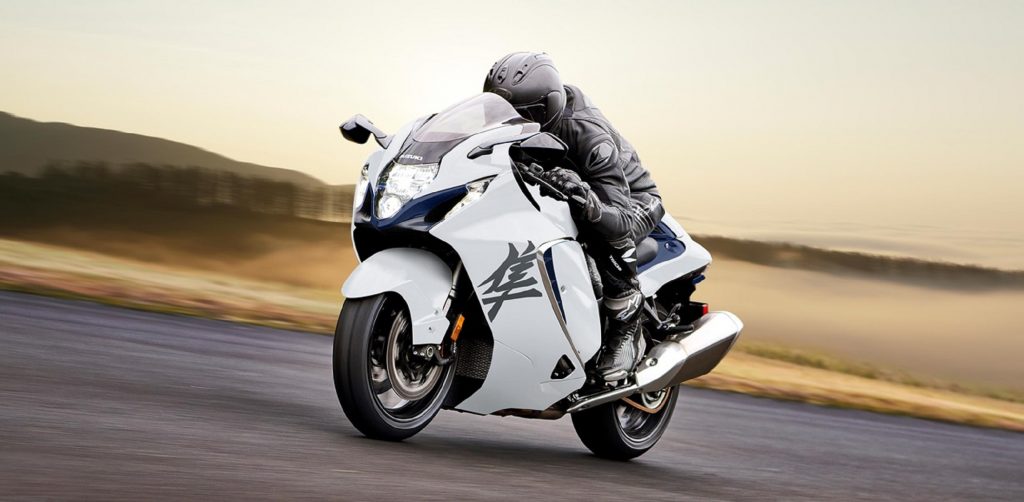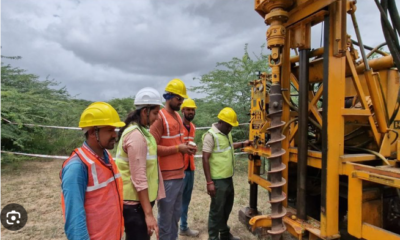KEYPOINTS:
- The new Suzuki Hayabusa expands on the signature.
- Suzuki Hayabusa 2022 review.
The new Suzuki Hayabusa expands on the signature, massive body lines of the past model.
Weighing at 264 kg kerb, the 2022 Hayabusa Busa sees a minimal 2 kg drop over the archetype.
The Japanese image for Hayabusa remains gladly introduced over the sides in huge text style.
Suzuki Hayabusa has characterized the word ‘unbelievable’ in the realm of superbikes for quite a long time. However, destined to bring down any semblance of Honda CBR1100XX Super Blackbird, Busa accomplished more than that by administering the speed tracks and salt lakes, in the meantime setting guidelines for solace and arm-extending speed increase on a street bicycle. Thus, for 2021, the Busa has entered its third era after a standby of good 13 years; however, has all that standby has been beneficial? Peruse on to know.
The new Hayabusa expands on the signature, large and cumbersome body lines of the past model. However, it remains right away unmistakable as its restyled, wind-cutting body holds the prompts enlivened by the peregrine hawk. For 2021, Suzuki’s plan group has joined particular lines and shapes on the Busa to give it a new flavour.
A more keen front façade with razor-cut air scoops is featured by the dazzling orange or red specifying, contingent on the shading choice. The Japanese image for ‘Hayabusa’ remains gladly introduced over the sides in huge textual style, and afterwards, some more chrome and orange is itemized as afterthought fairing cuts. The back has likewise been revamped totally, and the new taillights alongside the back seat cowl give it an extraterrestrial look.
All the lighting around the refreshed Busa is presently LED, and it oozes complexity and premium quality. Another feature of the new model is its advanced TFT run. The screen sits between recognizable looking simple checks. While we’re accustomed to seeing a comparative old-new blend on visiting style cruisers, it’s anything but an inviting expansion on a sportbike.
Because of an all-out reconstruct on the 1340cc powerplant, Suzuki has accomplished a much smoother and more grounded low-to-mid reach power yield. And all much gratitude goes to the different updates that have gone inside the framework, including another admission framework, reexamined cam timing, new cylinders, and an upgraded exhaust that assists the Busa with accomplishing Euro 5 or BS 6-consistence. The aftereffect of this powertrain is 188 pull and 151 Nm of force. Hayabusa idealists may grumble about the pinnacle ponies have dropped when contrasted with the last-gen model. However, the cruiser figures out how to feel quicker. Suzuki’s case of supported low-to-midrange force creation is appropriately apparent.
The choke reaction on the new Busa is right on the money, and there’s a crazy measure of smooth influence accessible on-request. All you need is a limited quantity of choke to make the landscape obscure, regardless of the stuff you are opened in. On the other hand, on totally open expressways, the bicycle never feels focused, and there are huge loads of roll-on power for fast overwhelms and passes.
The utilization of ride-by-wire and Bosch IMU-based footing control has changed the experience on the Busa, and it’s just gotten perhaps the most receptive huge bore four-chamber bicycles that I’ve put my hands on to date. Likewise, a few riding modes to play with, where the ‘C’ is the one you should be in on the off chance that you have a pillion along. At the same time, B gets a marginally more keen reaction; however, he switches into An, and the situation spins out of control.
While low force C and B modes are on the milder side, the full force A mode releases all the genuine power that is likewise terrifying now and again. Nothing to 100 or 150 kmph is accomplished in an issue of a couple of moments, and it’s anything but an assignment to clutch the bar after this speed. On account of the new bi-directional quick-shifter, you can trust the grasp of the bar all the more firmly during the speed run(s) as it works immaculately.
The force conveyance of the new 2022 Hayabusa, joined with the updated hardware, allows you to whip it around without the steady dread of getting launched out from the seat. It unmistakably holds the arm pulling speed increase it made its name for, yet now the security net of the gadgets make it more reasonable and prepared for riders of all ages and experience.
Weighing at 264 kg kerb, the new Busa sees a negligible 2 kg drop over the archetype; however, truly, it doesn’t bring a lot of contrast. You will feel the weight when going side to side, yet it stays quite possibly the most agreeable approach, quick starting with one point then onto the next.
It presently gets new Brembo Style front callipers and 10mm-bigger 320mm rotors that work hard at managing speeds. In addition, the new connected ABS framework, which appropriates slowing down power between the front and back, functions admirably. Likewise, an uncommon notice must be made of the Bridgestone Battlax Hypersport S22 tires offered as a standard fitment and give remarkable hold and cornering capacities to the Busa.
For 2021, the new Busa requests a somewhat more extreme – ₹16.4 lakh (ex-display area, India) sticker price, which is about ₹2.7 lakh throughout the last model. Yet, with every new enhancement, the climb doesn’t look that huge, as it figures out how to stay one completely reasonable recommendation.
The new-gen Busa has unmistakably raised the stakes with all the new age refreshes it has gotten. Not simply the more honed looks and improved powertrain, it’s the class-characterizing set of hardware that gets all the distinction of the new machine. But, by and large, it figures out how to be one of the speediest yet agreeable methods of moving on two wheels and no big surprise why the clique of the Hayabusa is still, however solid as it seemed to be a very long time back.


























